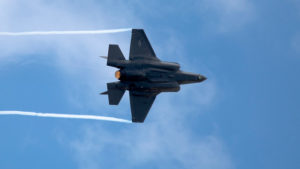
The Department of Defense (DoD) needs an updated modernization schedule and improved data on software development before the F-35 fighter can transition from development to full production, leaving the program with more delays and costs, according to a new Government Accountability Office (GAO) report released on March 18. The F-35 program is currently working on a modernization effort, known as Block 4, where the DoD is delivering capabilities to the warfighter by incrementally developing, testing, and delivering small groups of…













